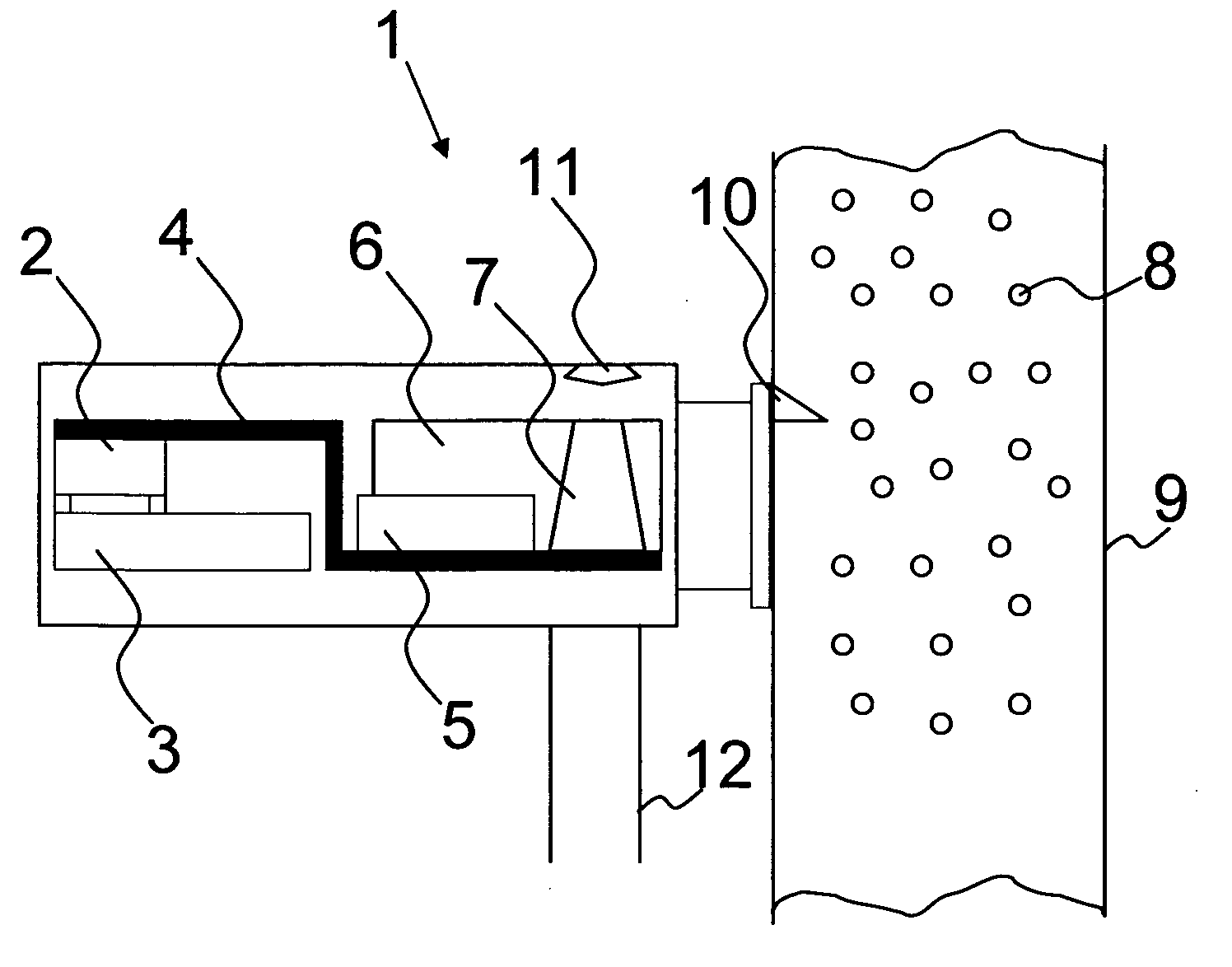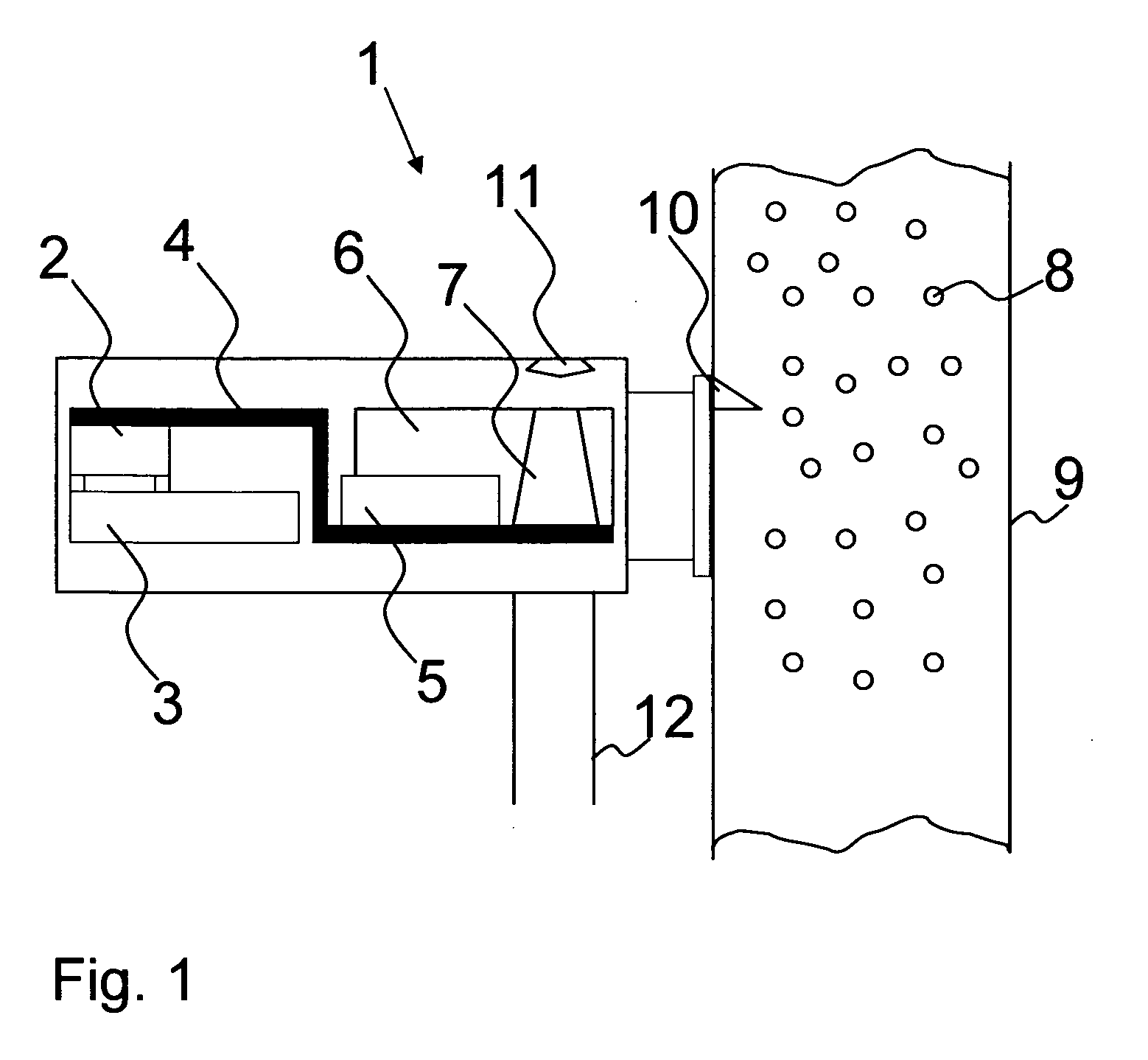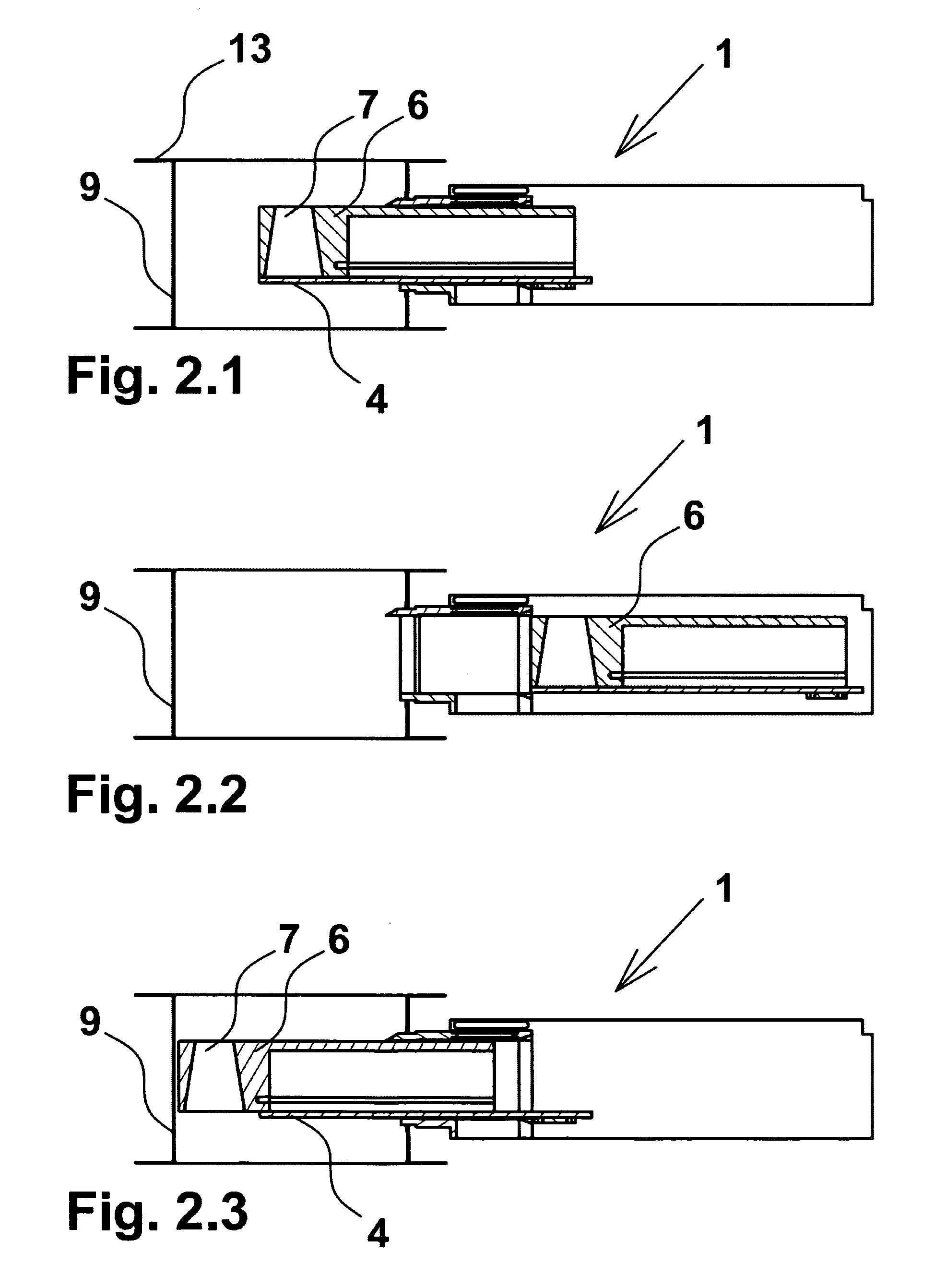Sampling apparatus and method for sampling
- Summary
- Abstract
- Description
- Claims
- Application Information
AI Technical Summary
Benefits of technology
Problems solved by technology
Method used
Image
Examples
Embodiment Construction
[0039]As previously mentioned, the invention concerns a system which can be mounted at any place in a manufacturing process for diverse products where, e.g., a density determination may be of interest. The density measurement according to the invention is developed with regard to a more optimal design which will facilitate cleaning of the sampling cup and while, at the same time, the scraping off of the product may be substantially reduced in order thereby to improve the weighing result. Furthermore, other measurements may be performed in the sample taken by the sampling cup, whereby a plurality of physical conditions of the product may be determined and used as regulating parameter.
[0040]In FIG. 1 is seen the system 1 which comprises a weighing cell 2 mounted on a first actuator 3 which is displaceable back and forth in horizontal direction. On the weighing cell 2, an arm 4 on which is mounted a further actuator 5. A sampling cup 6 is mounted in connection with the actuator 5 in th...
PUM
 Login to View More
Login to View More Abstract
Description
Claims
Application Information
 Login to View More
Login to View More - R&D
- Intellectual Property
- Life Sciences
- Materials
- Tech Scout
- Unparalleled Data Quality
- Higher Quality Content
- 60% Fewer Hallucinations
Browse by: Latest US Patents, China's latest patents, Technical Efficacy Thesaurus, Application Domain, Technology Topic, Popular Technical Reports.
© 2025 PatSnap. All rights reserved.Legal|Privacy policy|Modern Slavery Act Transparency Statement|Sitemap|About US| Contact US: help@patsnap.com



